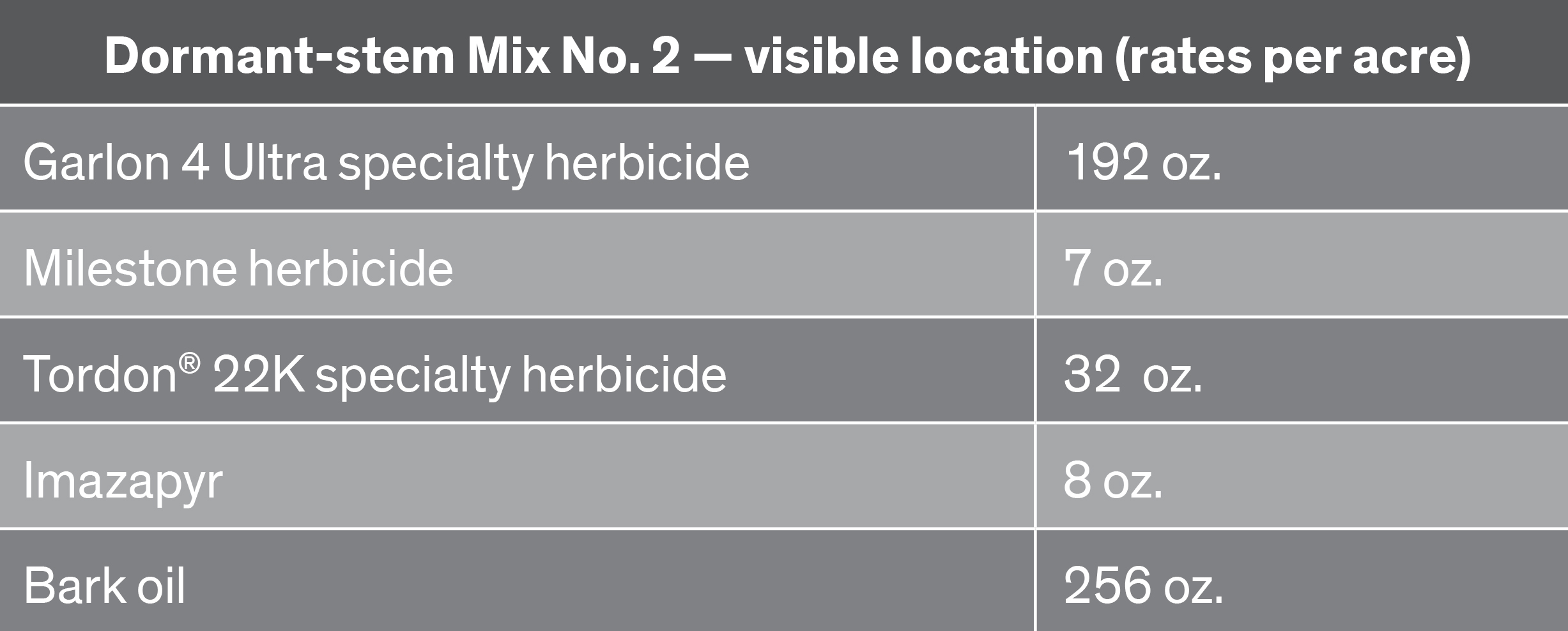Appalachian Power buys more time with dormant treatments

Time is a key input in implementing vegetation management programs. For a utility and its partners, getting more of it required looking at an alternative herbicide application method.
Time is a key input in implementing vegetation management programs. For a utility and its partners, getting more of it required looking at an alternative herbicide application method.
It might seem ironic to find collaboration at the geographical center of what was the iconic Hatfield and McCoy feud. But Appalachian Power needs teamwork to deliver power to even the most remote areas of the mountainous border area between southeastern Kentucky and West Virginia. And it needs time.
The rugged terrain here requires a more deliberate pace for applicators to safely, effectively and responsibly manage rights-of-way. Any delay can be detrimental to completing vegetation management cycles.
It’s why Dwayne Starr, senior utility forester with Appalachian Power, sought collaboration on trials of dormant-stem treatments to see if they might provide an option to extend his treatment season — and give him more time to manage his rights-of-way. The results were convincing.
Appalachian Power is a regional electric utility that is part of American Electric Power. Starr manages eight counties in southern West Virginia that encompass 2,700 very challenging miles of distribution line. “I like to say that some of the terrain we manage is too steep for a billy goat,” he says.
Starr’s goal for line maintenance is 440 line miles per year, but herbicide work typically can’t begin until after Memorial Day, giving applicators a tight window each season to perform foliar treatments.
It’s what pushed him to look at alternatives.
“We wanted to look at dormant-stem treatments as a way to extend our spray season and give our crews the option to keep going,” Starr says.
Even with his more than 40 years of experience, Starr relies on inputs and insights from an experienced team of partners, including Daniel Thacker, project manager, and Samuel Thacker, general foreman, with Wright Tree Service, Inc.; Brock Shockley, territory manager with Nutrien Solutions (formerly Crop Production Services, Timberland Division); and Stacie Songer, territory manager with Corteva Agriscience™. Wright Tree Service handles much of the contract application work, and Nutrien Solutions and Corteva Agriscience recommend and deliver herbicide solutions.
Dormant stem wasn’t a new concept to everyone on the team.
“We’ve seen a big increase in dormant-stem work in recent years,” Shockley says. “I’ve worked with Corteva Agriscience on some really successful treatments on similar rights-of-way, so we didn’t have to start from scratch.”
In November 2017, the team selected and treated two test plots. The first plot was a fairly secluded stretch of Appalachian Power’s rights-of-way. The second was rights-of-way in a highly visible, residential neighborhood.
“We had planned two smaller test plots, but once we got started, we made the decision to keep going,” Daniel Thacker says. “We ended up spraying more than 200 acres.”
Each location had its own herbicide mix. The remote right-of-way mix was Garlon® 4 Ultra specialty herbicide, Milestone® herbicide, imazapyr and bark oil. The more visible location added Tordon® 22K specialty herbicide but lowered the rate of imazapyr. The team applied both mixes by using hydraulic sprayers. Exact rates are listed in the charts below:


As with all of Starr’s foliar mixes, the dormant-stem trial mixes came blended in 15-gallon returnable/refillable drums. “I like the extra layer of safety, accountability and stewardship we get from a closed-loop system,” he says.
The team gathered in late June 2018 to view the plots. Control was the first — and most important — measurement taken because if additional time comes at the expense of control on targeted vegetation, there isn’t much value gained.
“The first mix at the more remote plot is showing more than 80 percent control,” Shockley says. “The more visible plot where the mix included Tordon is showing more than 90 percent control.”
“We like the control we’re seeing and only think it will improve as our applicators get accustomed to making these treatments,” Daniel Thacker says. “And feedback from our crews is that dormant-stem treatments take about the same amount of time to make as foliar treatments.”
Samuel Thacker adds that when crews are able to keep spraying throughout the year, they tend to stay sharper. “We’ve seen that when guys are able to move to spraying dormant stem after foliar season, they are sharper when foliar season comes back around,” he says. “There’s no long offseason from spray work, so it’s an easier transition from dormant to foliar.”
Dormant-stem treatments also are valuable for treating sensitive areas, such as around crops, and in residential areas, because brownout is much less noticeable than with foliar treatment. This has been shown to help reduce landowner complaints — which played out with the second test plot.
“We didn’t receive any complaints associated with our trial plot in the residential area,” Starr says.
Now the team must determine when and where dormant-stem treatments will go this season. Based on initial results, it’s a good bet it will be on more than 200 acres. Either way, Appalachian Power has found success in extending its application season with dormant-stem treatments.
™®Trademarks of Dow AgroSciences, DuPont or Pioneer, and their affiliated companies or their respective owners. Tordon 22K is a Restricted Use Pesticide. When treating areas in and around roadside or utility rights-of-way that are or will be grazed, hayed or planted to forage, important label precautions apply regarding harvesting hay from treated sites, using manure from animals grazing on treated areas or rotating the treated area to sensitive crops. See the product label for details. State restrictions on the sale and use of Garlon 4 Ultra and Milestone apply. Consult the label before purchase or use for full details. Always read and follow label directions.